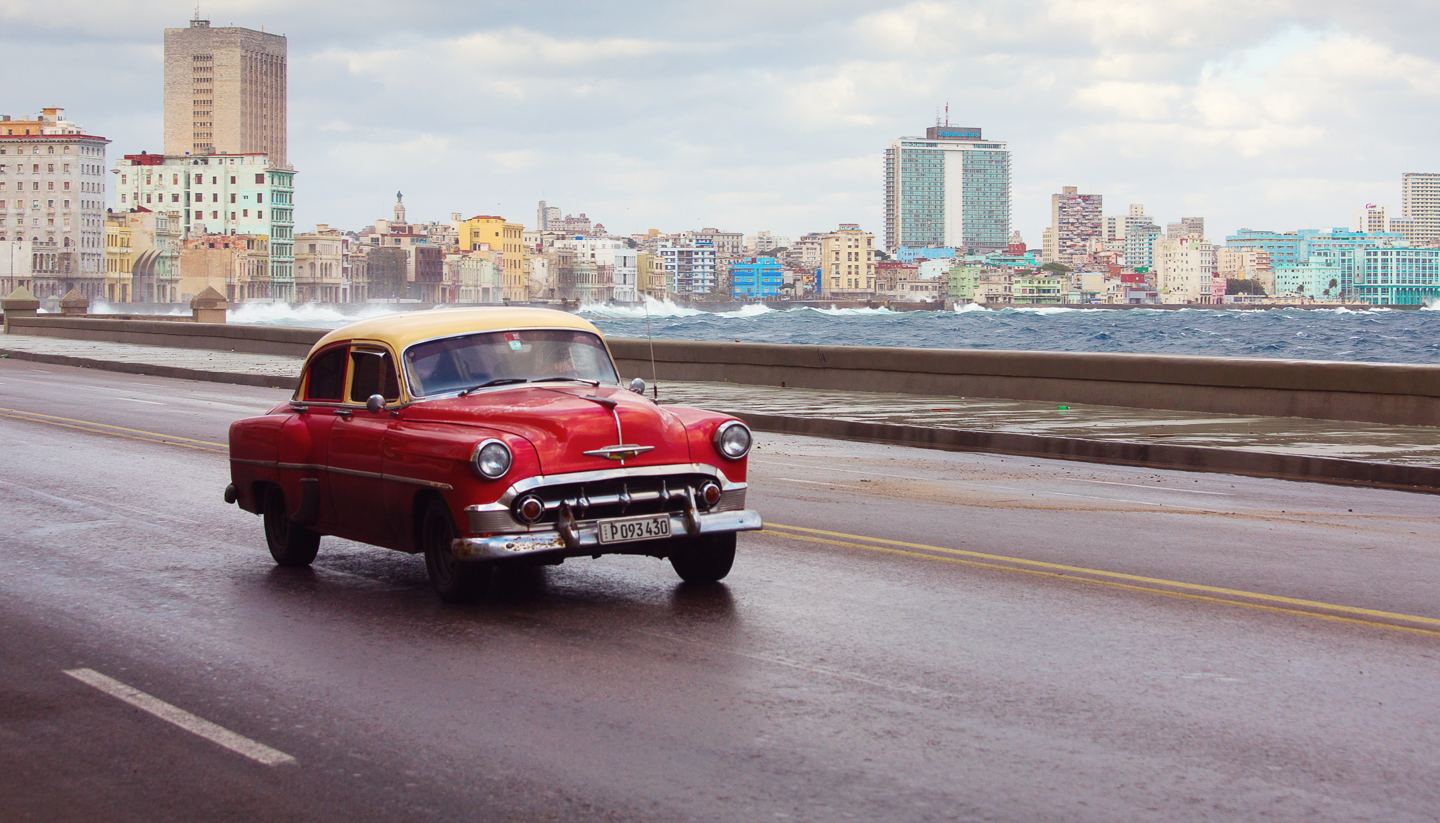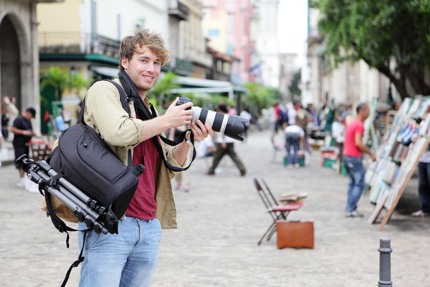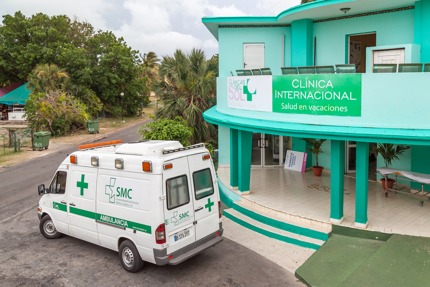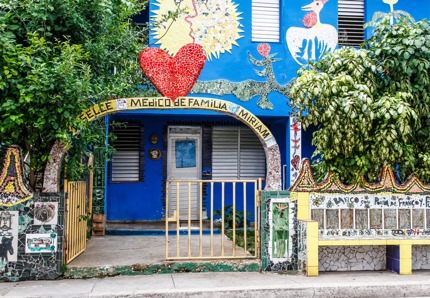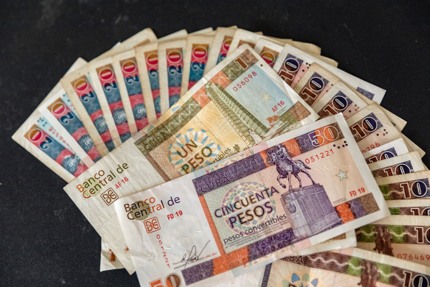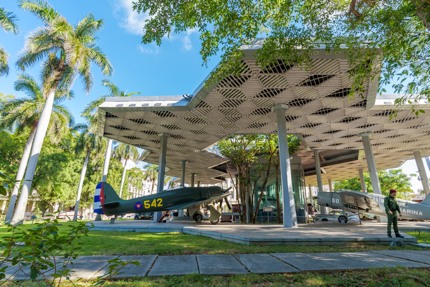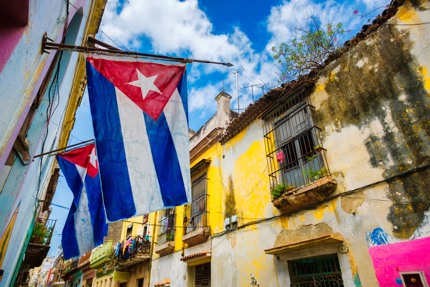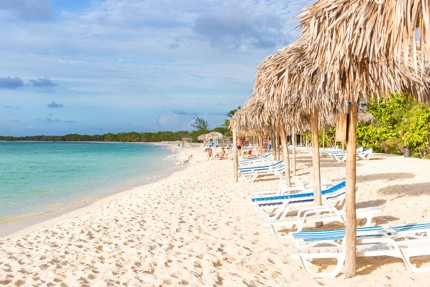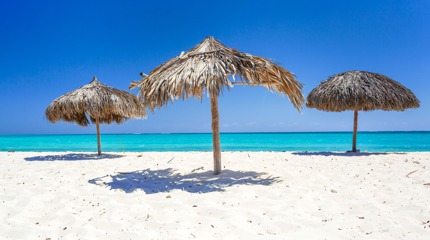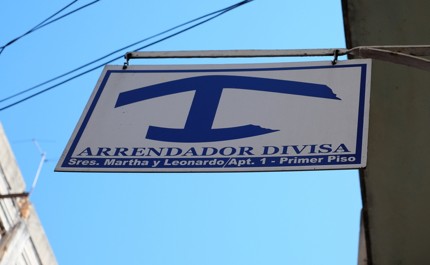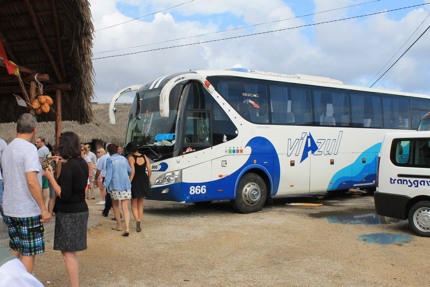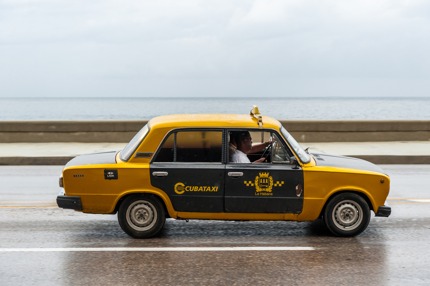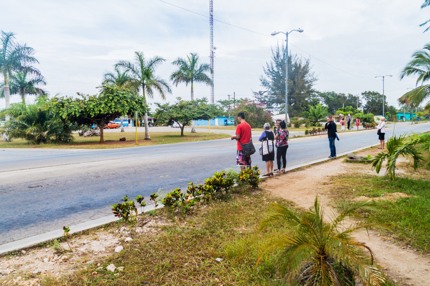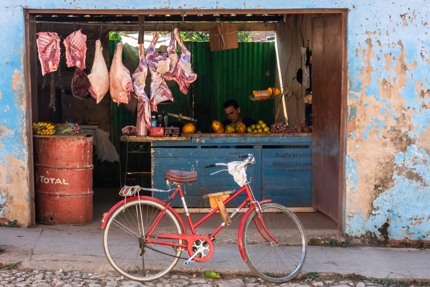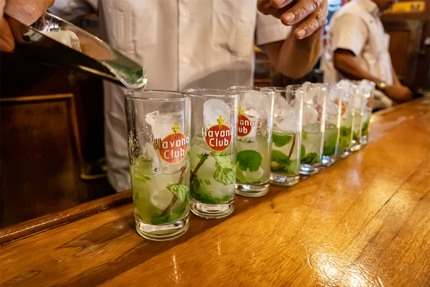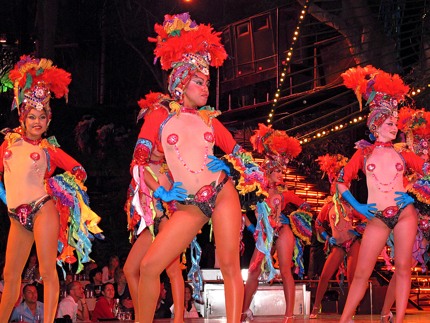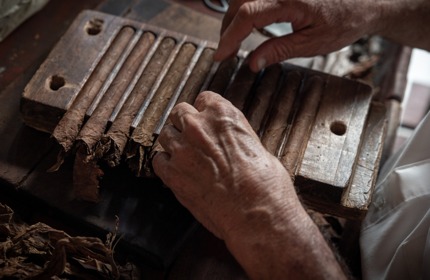Widely considered as one of the most unique holiday destinations, Cuba's rich culture and fascinating history have won many a tourist's heart
While Cuba’s upbeat salsa rhythms may make the best soundtrack to your holiday, our useful travel tips will keep you safe and help you make the most out of your Cuban holidays.
1. Cuba is changing, albeit slowly
While a large part of Cuba is still stuck in a time warp, and the decades-long trade restrictions imposed by the US haven’t made it easier for Cuba and its people, the country is nonetheless changing and progressing. Cuba has intensified its relationships with the international community, and entrepreneurship is emerging steadily. In 2019, there were about 650,000 self-employed individuals (known locally as cuentapropistas) in Cuba, up 325% from 1996, according to government figures.
Tourism is a key source of hard currency. Even during this COVID-19 pandemic, the Cuban government allows charter flights and holidaymakers to a few secluded resorts on its string of small islands such as Cayo Coco, Cayo Cruz and Cayo Guillermo. Travellers must have health insurance (which we will cover later) and go through a COVID-19 test upon arrival – if the test is negative, the blissfully uncrowded sandy beaches and warm waters await.
2. You probably need a tourist visa
Only nationals of 20 countries do not require a visa to visit Cuba, although the amount of time you can spend in Cuba varies. These countries are Antigua and Barbuda, Barbados, Belarus, Benin, Bosnia and Herzegovina, Dominica, Grenada, Kenya, Malaysia, Mongolia, Montenegro, Namibia, North Macedonia, Russia, Serbia, Singapore, St Lucia, St Kitts & Nevis, St Vincent and the Grenadines, and the United Arab Emirates.
Visitors from countries not mentioned above will need a tourist visa (also known as a tourist card) to visit Cuba. Visit the official Representaciones Diplomáticas de Cuba en el Exterior website and get the contact of the Cuban Embassy in your country for information on tourist card application.
For more information, check out the Cuba visa and passport requirements page.
3. Adequate travel insurance is essential
Excellent community-based polyclinics are the backbone of Cuba’s healthcare system, but equipment and medications are often in short supply due to the US blockade. Visitors are required to obtain travel insurance before the trip – you will be asked to show a copy of your travel insurance upon arrival or to prove your ability to pay prior to treatment.
Don’t forget to pack a good supply of medications you need. This includes both prescriptions and those you would usually buy over the counter as they may not be readily available in Cuba.
4. You will only get Cuban pesos in Cuba
You can only exchange Cuban currency when you arrive in Cuba, at banks, hotels, and government currency exchange houses known as CADECA. Don’t be tempted to use an unlicensed money changer as you may be given fraudulent notes unknowingly.
Cuba has two types of currency – Cuban Convertibles Pesos (CUC) and Cuban Pesos (CUP). The CUC is more valuable (it is pegged to the US dollar at 1:1) and is for visitors. The CUP is 25 times less valuable than the CUC and is mainly used by residents to pay for daily essentials. There have been talks to unify the CUC and CUP by getting rid of the CUC permanently. In October 2020, President Miguel Diaz-Canel mentioned again that Cuba would soon unify its dual currency system before the end of the year. Nonetheless, there are doubts that it will actually happen as the move might cause inflation, at a time when the country’s tourism sector is taking a hit from the COVID-19 pandemic.
For the time being, beware of both currencies and learn to tell them apart – every CUP note features a Cuban hero while all CUC notes have monuments.
Before leaving Cuba, you must change the remaining CUC you have at the airport. Once you are through immigration, all Cuban pesos become useless and the shops will only accept USD, Euro and other foreign currencies.
5. Havana is a gem
Vibrant, beautiful, yet at times overwhelming, Havana captivates even the worldliest travellers. The contrast of old and new is stark – in Old Havana, a UNESCO Heritage Site, you will see magnificent Spanish colonial buildings being lovingly restored to their former glory, but around the corner, you will also see dilapidated tenements with crumbling balconies that look like they are about to collapse.
High-brow tourists certainly can’t miss the Museo de la Revolución and the giant glass box that lies behind the museum – it contains the Granma, the yacht that transported 82 revolutionists (including Fidel Castro, Raúl Castro and Che Guevara) from Mexico to Cuba in November 1956. Revellers, on the other hand, can delve headfirst into the many bars of Havana, including the self-proclaimed ‘cradle of the daiquiri’ El Floridita and the La Bodeguita del Medio, where the first mojito was created, allegedly.
6. Beachgoers won’t be disappointed
Cuba isn’t a single island; rather it is an archipelago comprising of some 1,600 islands, islets and cays. Some small islands (known locally as cayos) are exceptionally beautiful, perfect for those in search of shimmering sea fringed by long, sandy beaches.
Central Cuba has a string of stunning cayos, including Cayo Guillermo, Cayo Coco, Cayo Romano, Cayo Cruz, and Cayo Largo – all are prime holiday destinations.
7. Try out a casa particular instead of a hotel
If you aren’t joining a package tour to Cuba, seek out a casa particular (meaning private house) where you get a room in a beautifully-kept home. Breakfast is often available for a fee, and some hosts may also offer you dinner for a fee. In recent years, some of these homes have evolved and now there is even a small number of entire apartment available for rent.
Casas that are registered with the government display a blue lop-sided H sign on a white background. It is normal for the host to ask for your passport and signature in the registration book.
Don’t forget to book in advance. You’ll need proof of an accommodation booking to apply for a visa.
8. Camping doesn’t mean tents
Cubans love camping – but it doesn’t involve a tent. Instead, locals head to a holiday park like Campismos and rent a cabin. Most holiday parks also offer a range of social activities for guests to partake in. Beware that facilities tend to be simple and you are required to bring your own sheets and towels, along with personal toiletries.
If the idea appeals to you, check out www.campismopopular.cu (this site is genuine but it doesn’t use the Hypertext Transfer Protocol Secure extension, therefore you may get a warning from your browser).
9. Getting around in Cuba
If you want to get from one side of the island to another, like going from Havana in the northwest to Santiago de Cuba in the southeast, flying is the fastest option, with a journey time of 1 hour and 25 minutes. Cubana de Aviación (www.cubana.cu) is the national carrier.
The next best option is to take a long-distance coach (www.viazul.com), provided that you don’t mind sitting upright for hours, although you do get to stretch your legs during stops.
Conectando is another coach company serving Havana and a few other cities. They do a customised pick-up service, therefore you can only purchase the ticket a day before from a sales agent (like your hotel or one of the Cubanacán offices).
Train travel in Cuba is changing – it used to be highly unreliable, so much so that Cubans like to joke that a train might take three days to reach Santiago de Cuba (from Havana) on a journey supposed to take 16 hours. But since 2019, the government has been slowly replacing old railcars with a modern version – equipped with air-conditioning and cafeteria – and improving the services. You must purchase tickets in person and present your passport. On the day of your departure, arrive early so you can get your ticket stamped and have your passport checked.
For more information, check out the Getting around Cuba page.
10. Taxis are great for inner-city travel
For inner-city travel, taxis are the best option. The yellow Cubataxi is the most common and the drivers use meters. Private taxis, often in the form of classic cars, are increasingly common, though they are unlikely to have a meter, so agree the price in advance. Both Cubataxi and private taxi accept Cuban Convertibles Pesos (CUC).
The locals get around in colectivo (shared taxis) or almendrones (shared taxis that operate on a fixed route), which may or may not take tourists, so do ask around.
11. Hitchhiking is popular, but not for visitors
The culture of hitchhiking in Cuba started in the early 1990s when Cuba was facing petrol shortages. To make the best use of fuel, vehicles were obliged to offer a lift to hitchhikers. This practice still exists today – you see people forming a neat line on the side of the road, waiting for cars to offer them a ride.
Please note that foreign nationals cannot hitchhike in Cuba; although some who speak fluent Spanish do disguise as locals and get away with it.
Also, beware that the practice is changing slowly. In some instances, cars may not stop unless small amounts of money were to change hands.
12. Be prepared for a digital detox
Telecommunications are controlled by the state-owned ETECSA, and roaming agreements exist with only a few international mobile phone companies (and the fees are expensive). If you do need to use the Internet and your hotel doesn’t provide any, buy a Wi-Fi card from one of the ETECSA offices – the card allows you to access public Wi-Fi hotspots.
Connection speeds vary – you may get 64kbps to 4mbps (if you are lucky), but it is unlikely that you will get the same high speed as you would at home.
13. Food is filling but not fancy
Most Cubans rely on a supplies booklet known as liberta de Abastecimiento for basic groceries subsidised by the government. While food supplies may be rationed – and it is not unusual for restaurants or your casa host to run out of a particular ingredient – the food is nonetheless fresh and minimally processed, meaning they are free of additives and puzzling E-numbers. Rice, beans, chicken and pork are the staples. Beef is rare, but you may find it in more expensive tourist restaurants.
Cuban cuisine may be a challenge for vegetarians as most dishes are cooked in meat fat or contain small cubes of meat. Filling up at breakfast with eggs might be a good option.
14. Rum is a passion
Rum is synonymous with Cuba, and Havana Club is synonymous with Cuban rum. White rum is the base to a great mojito, while the stronger-tasting oak-barrel-aged golden or dark rum tends to please the most demanding aficionados who enjoy drinking it neat.
If you want to know more about Cuban rum and the best places to drink rum in Havana, check out the post An introduction to Cuban rum (putting the rum in rumba).
15. Nightlife is about rum and music
Fuelled by rum and music, nightlife in Cuba is never boring and you will find yourself bopping along to the music with the locals fairly quickly. Many bars have a house band playing Cuban classics, with the upbeat son Cubano being the most popular genre. Young Cubans, on the other hand, prefer Reggaeton, a heady mix of reggae, hip hop and heavy Cuban dance rhythms.
If you are into cabaret, check out the Tropicana Club in Havana. Each night, they put on an all-singing, all-dancing extravaganza with some 200 performers moving to the beat in fancy costumes.
16. Learn a few words of Spanish
The main language in Cuba is Cuban Spanish or Cubano – essentially Spanish but with some syllables softened or dropped. Knowing a few words will really help, especially if you decide to stay in a casa particular and your host may not speak fluent English.
Great basic phrases to know include Hola (hello), Un ticket, por favor (one ticket, please) and Habla usted inglés? (Do you speak English?).
Also, consider downloading a language app to your phone that doesn’t rely on internet access, or getting a pocket conversation book.
17. Basic health and safety
Cuba is safe, but low crime doesn’t mean no crime. It pays to remain vigilant and keep your valuables hidden.
You also can’t drink the tap water in Cuba. It is best to purchase bottled water or fill up your reusable bottle with boiled water to limit plastic waste.
Another thing to watch out for is air pollution, contributed by old vehicles and industrial emissions. Wear a mask if you aren’t keen to breathe in the foul-smelling fumes.
18. Souvenirs from Cuba
Tourists like to leave Cuba with a few Cuban cigars or a bottle of Cuban rum. Only buy your souvenirs from a reputable shop – especially cigars. Avoid buying fake or factory rejects from street vendors.
In Havana, the best cigar shops include Real Fábrica de Tabacos Partagás (a cigar factory founded in 1845) and La Casa del Habano Quinta.
How many cigars you can bring back from Cuba depends on the import rules of your country. For example, if you are heading back to the UK, you are allowed to bring in 50 cigars provided that you don’t have other tobacco products.
19. Best time to visit Cuba
Cuba enjoys a tropical climate with two main reasons – the dry season goes from late November to mid-April, and the rainy season is from May to October. The dry season is generally considered as the best time to visit Cuba, as daytime temperatures range between 26°C (79°F) to 30°C (86°F). Do note that despite the name, the dry season does see a few days of rain in each month.
The rainy season is wet and muggy. From August to October, tropical storms and cyclones may affect the eastern part of Cuba too. See the Cuba weather, climate and geography page for more information.
Before you go, check out:
You may also like:
